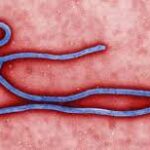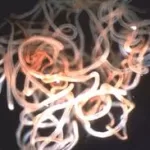New York, August 19, 2024 — In a significant advance for autism research, scientists at Rockefeller University’s Laboratory of Developmental Neurobiology have identified a gene that may hold the key to preventing autism spectrum disorder (ASD), a neurodevelopmental condition that affects social interaction, communication, learning, and behavior.
Autism spectrum disorder, which is marked by diverse brain function differences leading to challenges such as language impairments, social communication issues, hyperactivity, and repetitive behaviors, has long been linked to over 70 different genes. However, the recent discovery of the Astrotactin 2 (ASTN2) gene by this research team could pave the way for groundbreaking treatments.
The team’s study revealed that defects in the ASTN2 protein disrupt neural circuitry in the cerebellum, a crucial brain region involved in both motor control and cognitive functions. This disruption was notably observed in children with neurodevelopmental disorders.
Expanding on their previous work, the researchers conducted experiments by completely knocking out the ASTN2 gene in mice. The results were striking: mice lacking ASTN2 displayed behaviors that closely resembled those seen in individuals with ASD, including reduced vocalization and social interaction, as well as increased hyperactivity and repetitive behaviors.
“These traits have parallels in people with ASD,” explained Michalina Hanzel, a key researcher from the university. The study further highlighted structural and physiological changes in the cerebellum of these knockout mice, reinforcing the cerebellum’s broader role in cognitive functions beyond motor control.
The significance of this discovery is underscored by the team’s prior research from 2010, which identified the role of ASTN2 proteins in guiding neuron migration during cerebellar development. The latest findings delve deeper, showing that a total absence of ASTN2 leads to profound behavioral and brain changes in mice. For instance, the knockout mice not only vocalized less frequently but also exhibited a more limited pitch range, preferred familiar mice over new ones, and demonstrated increased hyperactivity and repetitive actions.
Accompanying these behavioral differences were subtle changes in the cerebellum, such as an increased density of dendritic spines in Purkinje cells. These changes are believed to alter communication between the cerebellum and other brain regions, potentially explaining the observed behavioral shifts.
Looking ahead, the research team plans to focus on examining human cerebellar cells with ASTN2 mutations. Their goal is to identify parallels between their findings in mice and humans and to investigate other autism-linked genes. “We’re very excited about the detailed role of ASTN2, but there’s much more to explore,” said lead researcher Mary E. Hatten.
This discovery opens new avenues for understanding autism at the genetic level and offers hope for future interventions that could mitigate or even prevent the development of ASD in children. As research progresses, the ASTN2 gene may become a critical target for therapeutic strategies aimed at addressing this complex and often challenging condition.











